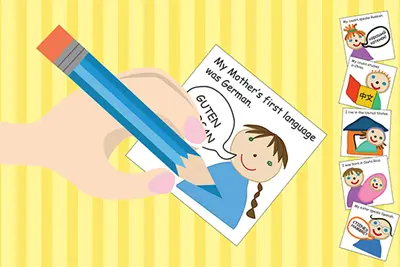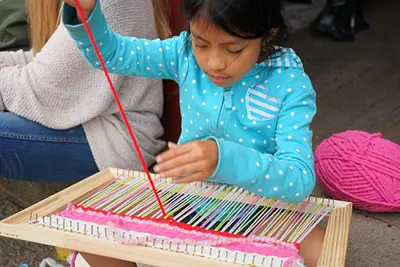$12,500 Grant from Mass Humanities Boosts Online Project
 Image by Ed Brennen
Image by Ed Brennen
04/05/2019
By David Perry
For four years, History Prof. Robert Forrant and Asst. Prof. Ingrid Hess of Art & Design have quietly charted the broad history of immigration in Lowell.
With the help of a team of UML students , they have gathered and curated hundreds of photographs, videos and essays, building a unique website that is designed to help teachers, students and academics put together the pieces of a historically significant part of Lowell’s DNA – the arrivals of waves of immigrants calling the city their new home.
The professors’ efforts recently got a boost with a $12,500 grant from Mass Humanities, an independent programming and funding organization.
The website, which will be called the Library of New England Immigration (LNEI), will be officially unveiled in the coming months and will be part of UMass Lowell’s library site. Initially, the site will focus on Lowell immigration, especially over the past 50 years, but it will take a broader view down the line, says Forrant.
“There’s nothing like it that I can find anywhere else,” Forrant says. “This gives visitors – be they middle school or high school or college students, or individuals interested in the vibrancy of our immigration history – a site that captures the American mosaic.”
It is the student work, plus telling a city’s story through its immigrants, Native Americans and those who have found asylum, that makes the site so unique, says Forrant.
Several UML students have helped, working as paid researchers, writers, image hunters, graphic artists and web designers. Cameron Blanchard, a junior majoring in fine arts, created the website. A graphic design alum, Ernest Guerrera ’18, began working on the project as a motion designer and is now project manager.
Hess notes that the outside funding represents more than capital.
“It’s really exciting to obtain this outside funding, and it shows that work done at the university is valued beyond the university,” she says.
“The money is also important to support students doing the historical research, helping with the writing and doing the major share of creating the videos and the site itself,” says Forrant, who teaches classes in immigration history. “Every student working on it is compensated.”
“It’s really exciting to obtain this outside funding, and it shows that work done at the university is valued beyond the university.” -Asst. Prof. of Art Ingrid HessHe estimates that between grants and other funds, more than $25,000 has been raised so far for the project.
Blanchard, whose concentration is in graphic design, was invited to the project by Hess in September 2017.
“Initially, my role was to get the site up and running,” he says. “But it includes web development and making sure the technology works and knowing what you need to make it.
“I think it’s a great project. To have all that information at your fingertips, and to put together a site for everybody to use, was amazing.”
“I’m grateful to have worked on this. It’s the history of Lowell and New England, and it’s where I’m from,” says Guerrera, a North Andover native.
Forrant says the arrangement of the information will make it easier to access with just a few mouse clicks.
“As a historian, I can research and assemble information for years, but with a click, you can have all this at your fingertips,” he says. “I can write a book, but this is going to reach a whole lot more people, and faster.”
The project was born shortly after Forrant and Hess met at an event that introduced veteran professors with newly arrived UML teachers. Forrant, who had long harbored ambitions of producing a large-scale project on immigration, found the person who could help him bring it to life using the latest technology.
Hess is also an award-winning children’s book author and designer whose subjects include diversity and empowerment. She met Forrant a few years ago when she was a new UML hire.
“We work well together,” she says. “We understand what the other person’s skill set is.”
Forrant agrees.
“I realized right away that by doing kids’ books, she knows how to present something complex in an interesting, compact way,” he says. “And I stay away from what she and her students do best. That’s when collaboration works best.”




